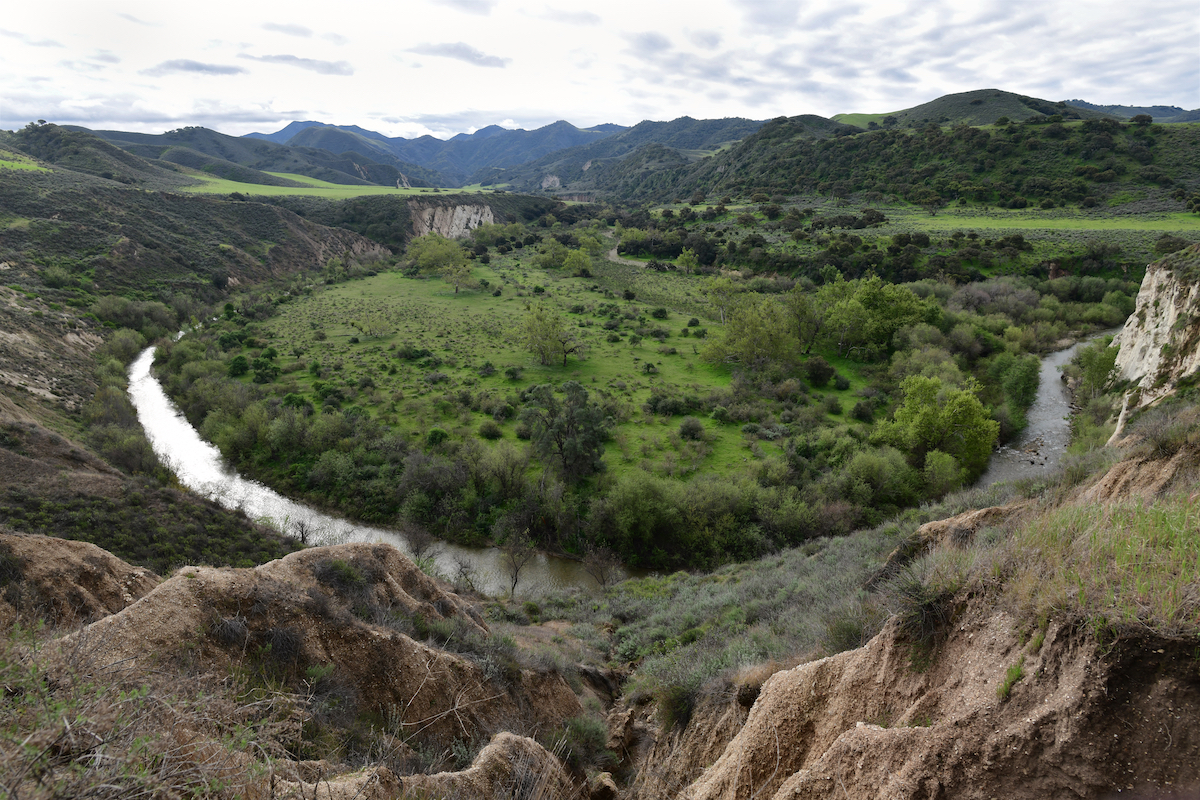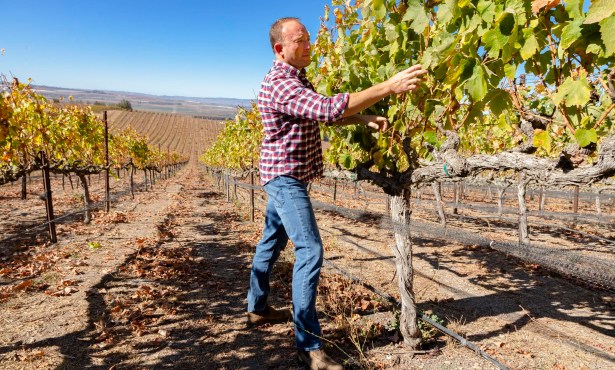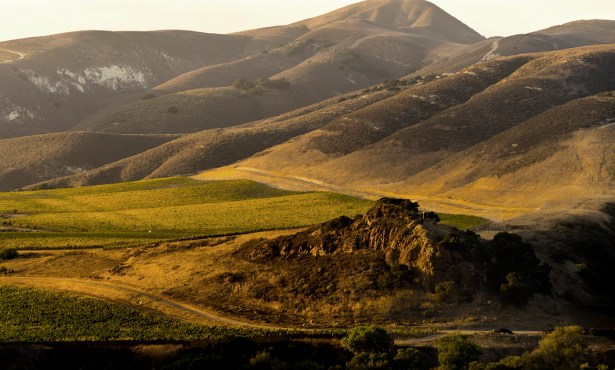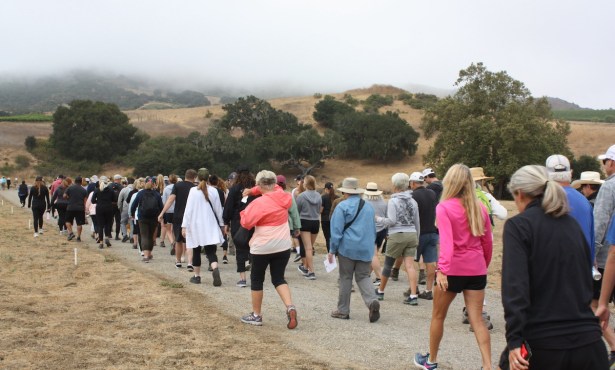Rancho Sisquoc Celebrates 75 Years
A New Book Explores the Legacy of Santa Maria Valley Ranch & Vineyard

Located far up the Santa Maria Valley, Rancho Sisquoc is one of Santa Barbara County’s most tremendous properties. It’s massive, at 58 square miles, being the largest private property left in the county; it’s old, as one of the last Mexican land grants before Americans took over in the 1840s, not counting the millennia of Chumash occupation; and it’s significant in all sorts of agricultural ways, from ranching to row crops to vineyards.
To celebrate the 70th year of ownership by the Flood family, and the 50th year of commercial vineyards being planted back in 1972, the family is releasing a book called Rancho Sisquoc: Enduring Legacy of an Historic Land Grant Ranch. Written by Judith Flood Wilbur and Chase Reynolds, with extensive photography that’s both historic from family albums and more modern by Steve McCrank, who also works in the winery, the book beautifully captures the landscape and lore. None other than former Governor Jerry Brown and Steve Hearst added forewords to the tome, as did local legend and ranch owner Eric Hvolboll. —Matt Kettmann
Here is an edited excerpt from Rancho Sisquoc: Enduring Legacy of an Historic Land Grant Ranch.

Both James and Betty Flood were larger-than-life characters. Despite not living full-time on the ranch, they were fully present in all decisions and present in actuality as much as possible. James Flood loved working with large machinery; when not needed in the office, corrals, fields, or vineyards, he could usually be found on a grader or tractor.
One time he was grading a steep part of the road called the 101 between the Dam Corral and Crazy Springs. When he stood up to answer the call of nature, the tractor tilted, slipped, and started slowly sliding down the steep incline. James rode the tractor all the way to the bottom, emerging with lots of bruises but no broken bones. After that, that stretch of road was called the “1-Uh-Oh.”
Betty was equally charismatic, whether creating memorable Thanksgiving gatherings around the kitchen table in the original farmhouse, gathering watercress along the river, or helping gather cattle. Even in her nineties, Betty still insisted on driving wine club guests to the vineyards in the old 1956 Land Rover. “It was considered the highlight of the day for wine club members to drive out to the vineyard in the Land Rover with Mrs. Flood,” says Judy Flood. “They loved it, but we were terrified she’d go off the cliff. She was 93, driving a 1956 Land Rover with no brakes. I told her it was not really prudent. She wrote, ‘Join me at your own risk!’ on a piece of paper and posted it on the windshield. She was so mad at me, she made seven trips that day.” Eventually, family members took to removing the spark plugs from the vehicle so Betty couldn’t start it.

To celebrate Betty’s 80th birthday, Judy and her children organized a three-day campout for 32 family members at the Tunnell House. Tents were erected and meals cooked on-site each day by a caterer who drove up from town. Days were filled with games, skits, treasure hunts, hikes, horseback rides, and fun. Evenings were spent sitting around the campfire sharing memories under the night sky.

It is fitting that the family members would mark their mother’s later years in such an adventurous, logistically complicated, and memorable way. The four Flood children — Jim, Judy, Elizabeth, and John — spent much of their childhoods traveling back and forth to the ranch, sometimes by train from San Jose to San Luis Obispo, where they’d eat club sandwiches in the dining car. “When our family dogs grew to six, we started driving,” recalls Elizabeth. “My mother collected dogs; we had so many strays.”
It was an unusual way to grow up, but for the Floods, it was just what they did. They would spend a month or more on the ranch every summer, Judy recalls. “The big highlights of summer were getting up at 5 a.m. and having breakfast with the cowboys and Mrs. Moreno. She’d ring the bell on the main house. There would be five or six cowboys. In those days, they ran cattle way up above Tunnell House. It was a 10- or 12-mile ride to Tunnell House; we’d camp there and look for cattle, then go from there into Abel Canyon, Manzana, and other areas. We’d bring them back to Tunnell House, where there were corrals, a water trough, the river, and a spring. We’d also round up in Media Portrero, a big area north of there. We spent a lot of time riding with the cowboys.”
Elizabeth has similar memories. “A typical summer day began with breakfast in the original cookhouse with the employees,” she says. “It consisted of gooey eggs, raw bacon, lots of coffee, and cigarette smoke. Conversation was limited to ‘yep’ and ‘dunno.’ Then we would catch the horses, saddle up, and head out to gather cattle. Pete, my favorite horse, had the SQ brand on his left cheek. My parents loved this activity, as did my younger brother, John. He and I would follow Doaney, an entertaining fellow who would show us his beer stash hidden in the creek. Often after riding on hot summer days, we headed to Bee Rock on the Sisquoc River. We kids fished, played in the swimming hole, and built forts. My father insisted that we eat the fish we caught, even though they tasted like river moss.”

Wildlife was ubiquitous on the ranch: Wild turkeys, wild boars, beavers, and rattlesnakes were frequently sighted. Skunks lived under the house. Bears were known to come to the MacMurray Vineyard to feast on the Merlot.
When Betty wasn’t moving cattle or building rock walls, she did the cooking and laundry. James spent his days outside in the vineyards, on horseback, and working alongside the men. He’d take guests and his children on hours-long Jeep rides explaining every aspect of the land, the cattle, his newly graded road, and the vineyards

“What I saw,” says Elizabeth, “was them working together. I was 4 when they got the place. It was just a dirt pile. It was a working ranch. They didn’t concentrate on lawns and trees, but they spent a lot of time cleaning it up and fixing it up…. Their goal was to have it be a ranch, not to turn it into a showplace. My parents didn’t want to change anything. They kept it a ranch, and it still is a ranch. It’s still authentic, and that’s what makes it different from other places.”
In the 1960s, James and Betty Flood were featured on the cover of Fortune Magazine. In the photo, they stand on the cliffs above ranch headquarters, thoroughly in their element, the Santa Maria Valley falling away behind them as the river makes its way to the ocean. From the same spot looking east, the ranch feels limitless, with layers of hills and mountains receding in the distance as one’s eye extends toward the wilderness in the Los Padres National Forest. The couple did their best to honor the land, instill respect for it in their children and grandchildren, and maintain its history and legacy while still making it viable in the 21st century. The next generation has every intention of doing the same.
Support the Santa Barbara Independent through a long-term or a single contribution.















You must be logged in to post a comment.